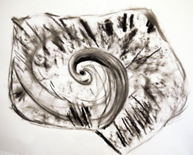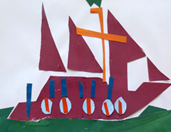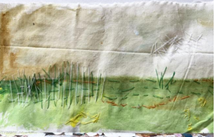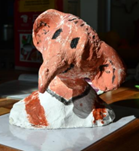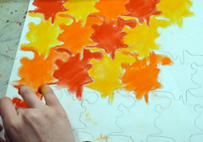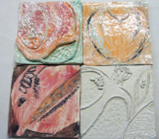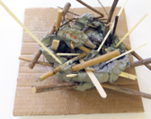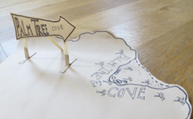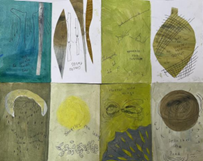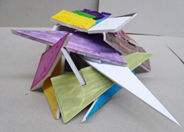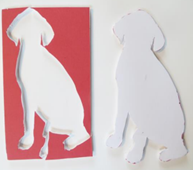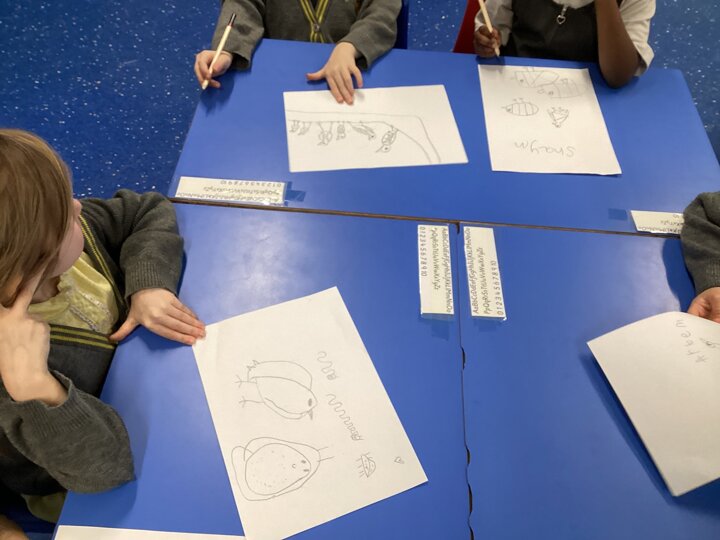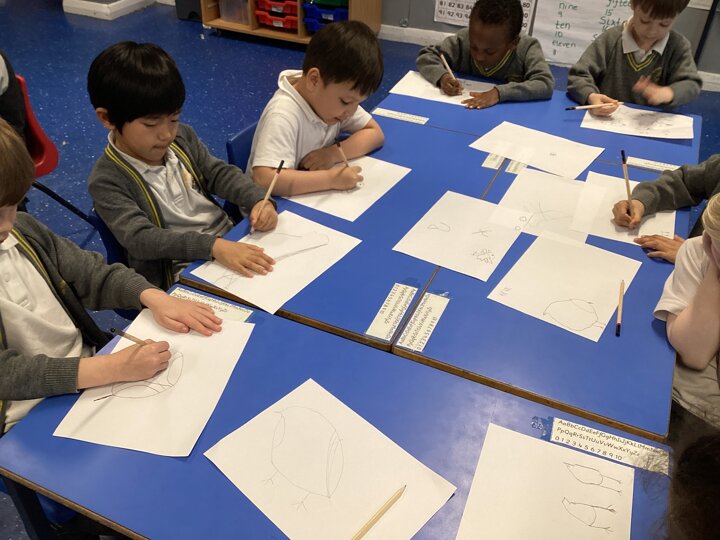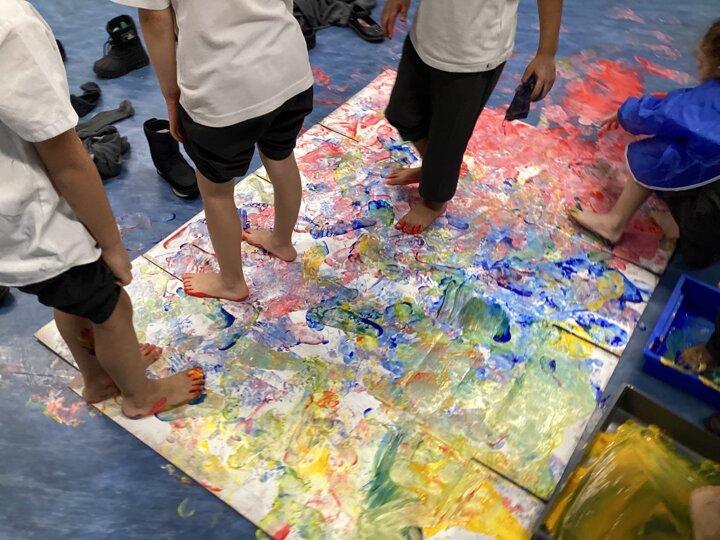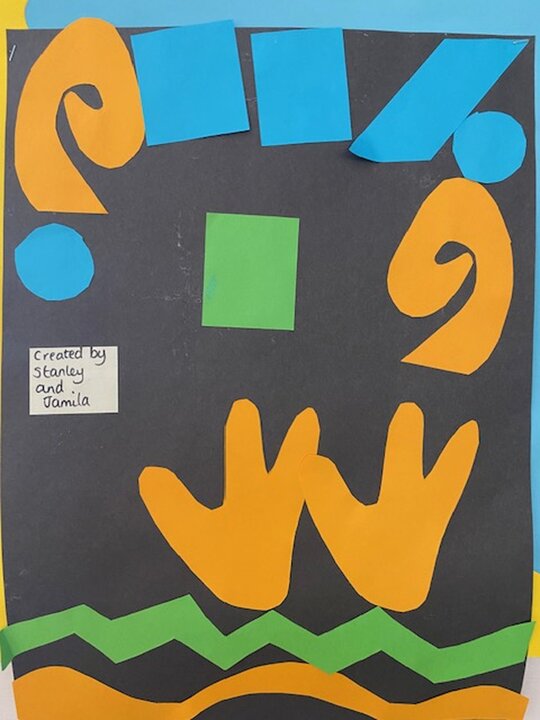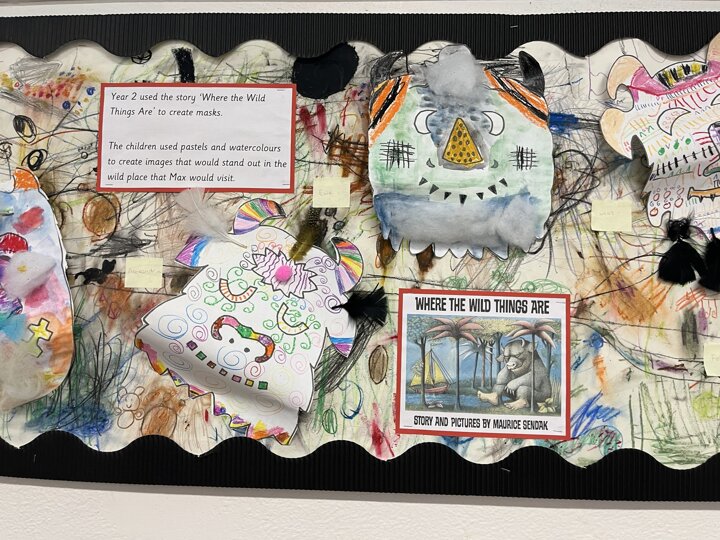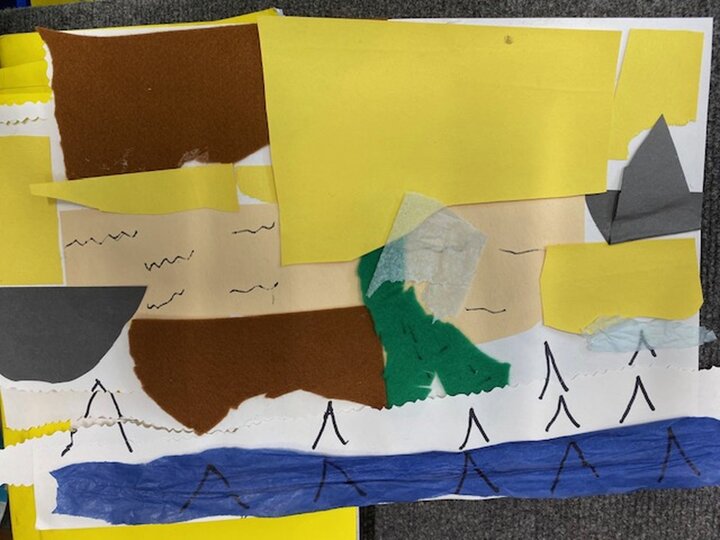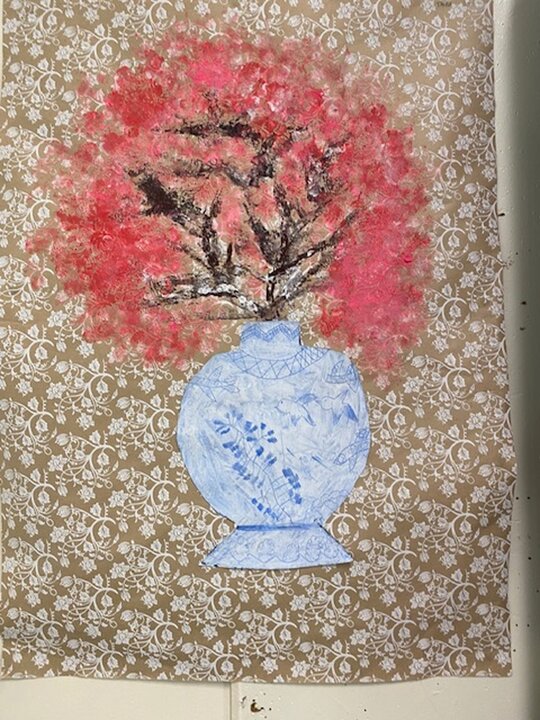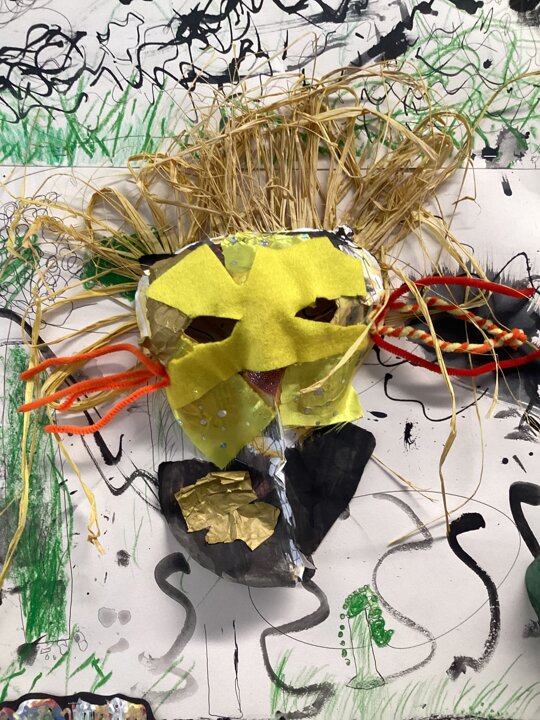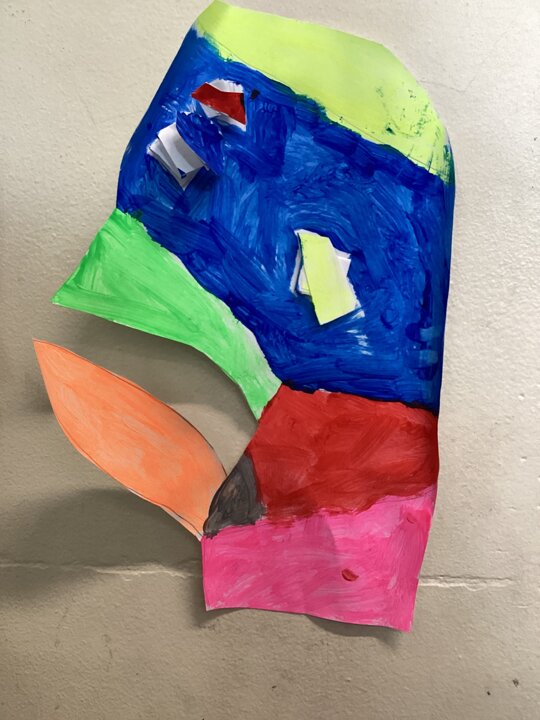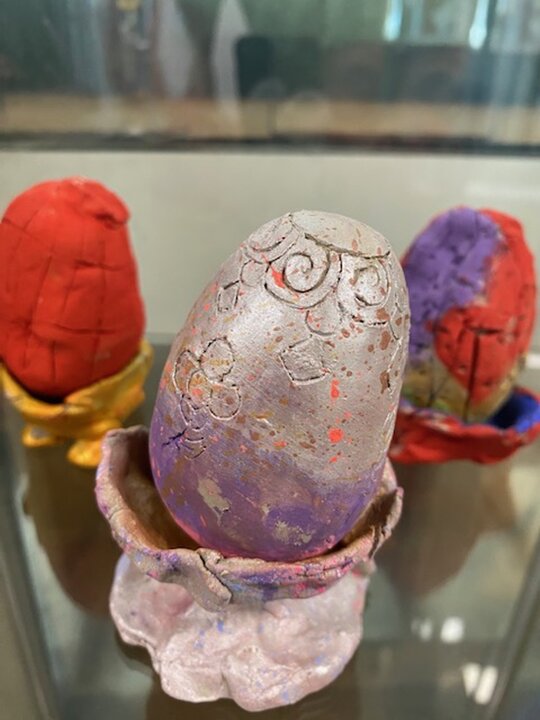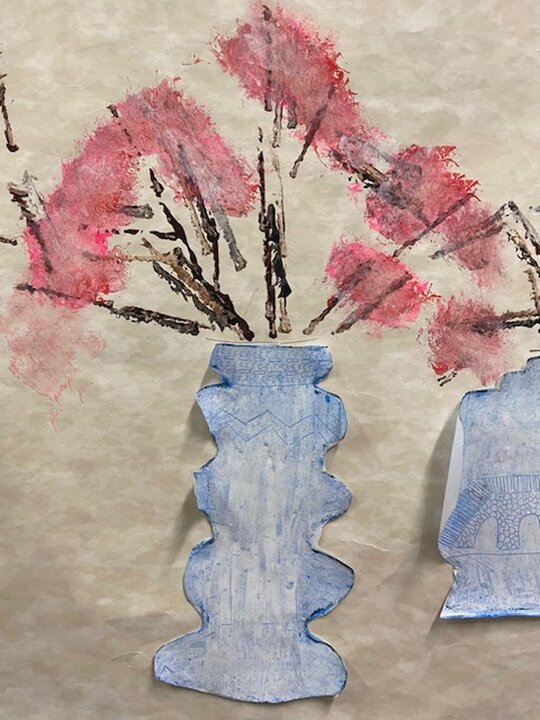Art & Design Curriculum Overview
| Year | Autumn | Spring 1 | Spring 2 | Summer |
|---|---|---|---|---|
| 1 |
Spirals
|
Simple print-making
|
Exploring watercolour
|
Making birds
|
| 2 |
Explore and draw
|
Exploring Monoprint
|
Expressive painting
|
Stick transformation
|
| 3 |
Charcoal, gestural drawing
|
Shape & colour - painting with scissors
|
Cloth, thread, paint
|
Telling stories
|
| 4 |
Story telling through drawing
|
Exploring pattern
|
Exploring Still - life
|
Sculpture, structure and inventiveness
|
| 5 |
Typography and maps
|
Making monotypes
|
Mixed media - cityscapes
|
Architecture
|
| 6 |
2D drawing to 3D making
|
Design and technology scheduled | Design and technology scheduled |
Paint, surface, texture - exploring identity
|
Art and Design Curriculum documents
Intent
The over-arching intent of our Art & Design Curriculum is to enable all children to think and act creatively in a range of different contexts and for a variety of reasons. We want children to enjoy the creative process and experience – ‘the journey’ – so that they:
- Are motivated to engage in creative activities
- Are empowered to make their own creative decisions as a result of their learning
- Grow to appreciate art and design as both an individual and collective experience
- Value the significance of art and design as a tool for documenting a creative response to the world around them
Our school mantra is:
- Excellence for everyone
- Every second counts
- Everyone is accountable
- No excuses
This underpins our efforts to support all children in becoming confident, independent artists who can articulate their choices and use their learning to support them in taking creative risks rather than working towards predefined, prescribed outcomes.
Implementation
At The William Hogarth School, children learn Art and Design as a discrete subject to support progression in their skills, knowledge and experience. Each year group undertakes 6 projects during the course of the school year, one for each half term. The curriculum is designed so that the learning for each year group builds upon skills that have been learnt previously, thereby ensuring progression.
Our Art & Design curriculum is organised into 8 key strands:
- Drawing
- Sketchbooks
- Printmaking
- Sculpture
- Painting
- Craft
- Textiles
- Design
Within each year group, we balance the development of skills in the main strands with exploration of a variety of media. All teachers encourage children to experiment, take creative risks and use their learning to be innovative in their responses. The plan for each year group provides opportunities for children to:
- Work at different scales
- Develop traditional skills and be experimental
- Undertake quiet, reflective work and more dynamic work
- Work individually and collaboratively
- Work in 2-D and 3-D
We have the very highest expectations for our pupils’ creative endeavours and capabilities. To encourage this, we introduce them to a wide range of materials from an early age to broaden their creative experiences and build their understanding and skills.
We appreciate that Art & Design is an excellent vehicle to enrich the whole curriculum and, where appropriate and relevant links can be made, we make use of these opportunities. As a result, the half-termly humanity topic may provide a stimulus or a starting point for learning in Art & Design. Whole school Art & Design projects inspired by British Values or through our cultural capital work are proudly displayed and celebrated.
Throughout the year, each class enjoys the opportunity to make use of our fantastic, dedicated art room, diverse outside space and the wonderful surrounding parks for their weekly Art & Design lessons. This allows for creative exploration, careful observation and a broad variety of drawing and sketching opportunities using sketchbooks (made and bought). Children are encouraged to use their surroundings to stimulate creative responses and to explore their creativity in different contexts.
Impact
When reviewing impact, we consider all aspects of the children’s learning in Art & Design. This includes:
- The quality of what the children have made, as well as how they made it
- The skills and processes they have developed, refined and acquired
- What they have learned about the different tools &/or equipment they have used
Children have an enormous sense of pride in their learning in Art & Design which is reflected throughout the school in vibrant and creative corridor displays. As well as show-casing the children’s learning (process and outcome), these displays enrich and improve our school environment, demonstrating our whole school passion for the subject.
Our Art & Design curriculum helps every child to celebrate their uniqueness and contributes to our school community’s sense of togetherness by reflecting on how our individual responses can fit in and build a collective perspective.
The National curriculum aims for KS1 and KS2
The national curriculum aims to ensure that all pupils:
- Produce creative work, exploring their ideas and recording their experiences
- Become proficient in drawing, painting, sculpture and other art, craft and design techniques
- Evaluate and analyse creative works using the language of art, craft and design
- Know about great artists, craft makers and designers, and understand the historical and cultural development of their art forms.
These aims and objectives underpin every choice and decision we take at The William Hogarth School when constructing and delivering our Art & Design Curriculum.








